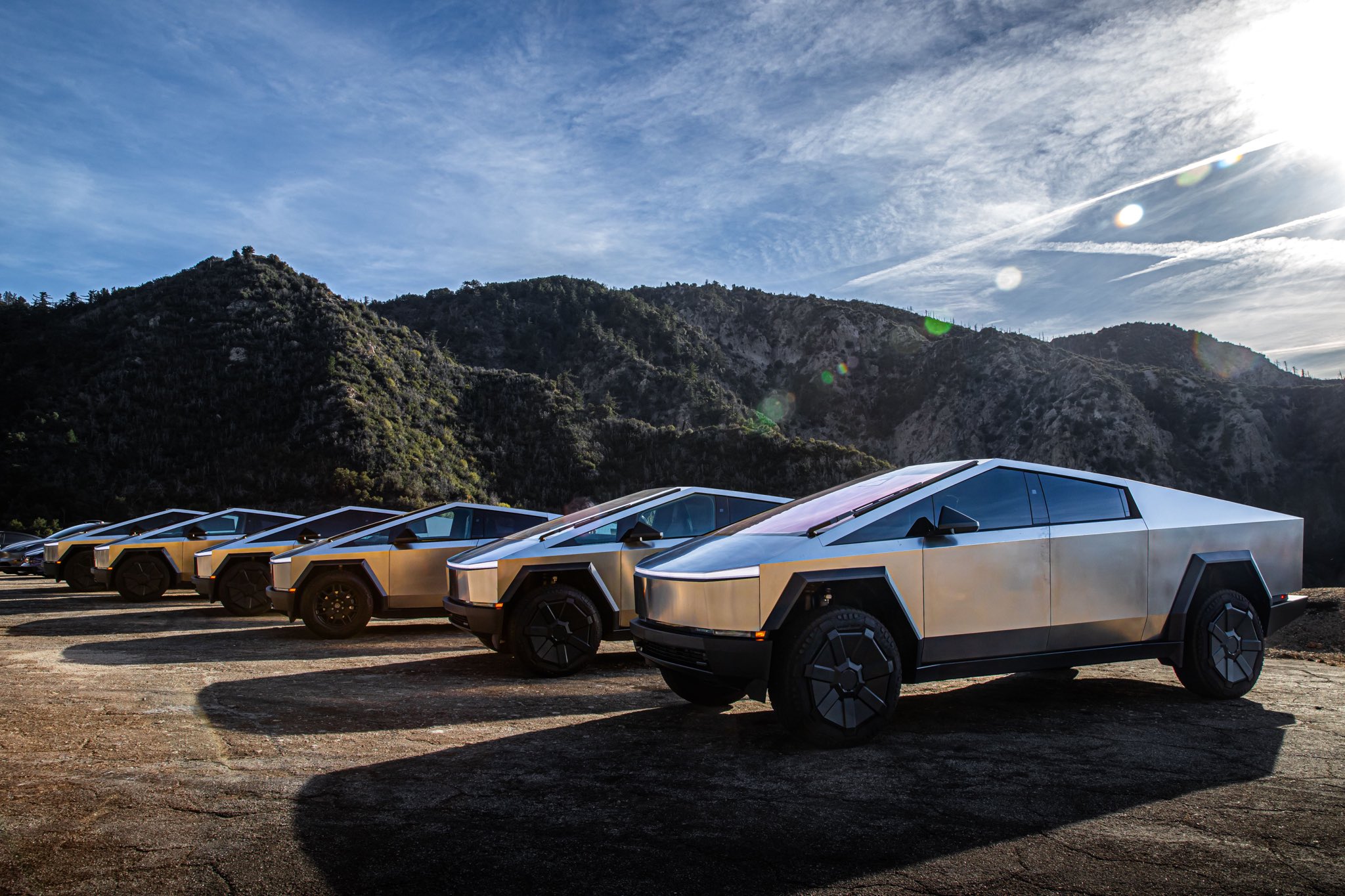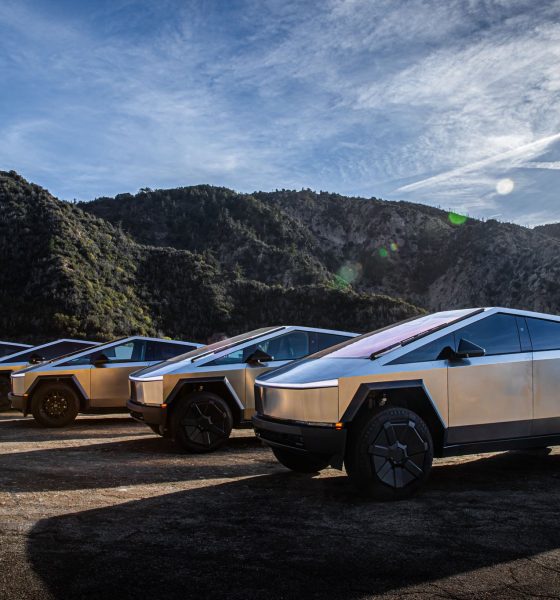

Investor's Corner
Tesla Q3 deliveries: Was it a beat or a miss?
Tesla reported its Q3 delivery figures this morning, with 462,890 vehicles making their way to customers throughout the three-month span. However, conflicting reports of a delivery beat or a delivery miss are circulating, but what’s the real answer?
It truly depends on who you ask.
A beat or a miss on deliveries is all based on what is reported vs. Wall Street consensus. Leading up to the delivery announcement this morning, Tesla’s Investor Relations reported that Wall Street consensus was put at 461,798, rounded up to 462,000.
Other outlets reported 460,000 and 461,000.
Tesla reports 462,890 deliveries for Q3 with a strong quarter for energy
This was based on the outlook of 28 different firms and last week, reports circulated that the Wall Street consensus was 462,000, which aligned with what Tesla said in its IR communication.
Tesla IR consensus was 462k pic.twitter.com/qAiJTiNpS2
— Sawyer Merritt (@SawyerMerritt) October 2, 2024
However, those numbers shifted this morning despite no additional firms putting out estimates for Tesla’s third quarter. The consensus number suddenly shifted to 463,000, meaning Tesla’s reported delivery figures would have gone from a slight beat to a slight miss.
Even Ives, who is bullish on Tesla, had his consensus figures shift this morning. Last week in a note, he wrote:
“Next week, Tesla is expected to announce its 3Q deliveries, which we believe will come in above the Street’s 462k unit bogey with whisper numbers around the 465k – 470k range.”
Ives had a different consensus figure this morning, according to a note released after deliveries were reported:
“Tesla just announced 3Q deliveries of 462.9k coming in-line with the Street’s 463.3k estimate and was below Street whisper numbers in the range of 465-470k.”
However, the delivery figures, on either end of the spectrum, are in line with estimates.
Ives wrote in a note this morning that the number Tesla reported was “in-line” with Wall Street, meaning no true upside but a step in the right direction:
“The 463k number we would characterize as good and a step in the right direction but clearly we and the Street were hoping for 3k-5k upside to this number and we will see some pressure on shares this morning as investors walk away from delivery numbers expecting more. Overall, this is a clear improvement from 1H and we believe getting in the range of 1.8 million for the year is still the key and important bogey.”
One thing is for sure: Tesla is still fighting to offset its planned slowdown in annual growth due to its focus on the next-gen platform.
We might not see the 2 million mark for another year or two, but keeping demand up with updated vehicle designs, like the Model 3 Highland, and a more affordable Single-Motor Cybertruck planned for 2025 could keep things interesting, potentially helping to stall the outlook that the true growth phase prior to the Robotaxi rollout is over.
Tesla will rely on a strong Q4, along with its Robotaxi unveiling event to keep things bullish through the remainder of 2024.
I’d love to hear from you! If you have any comments, concerns, or questions, please email me at joey@teslarati.com. You can also reach me on Twitter @KlenderJoey, or if you have news tips, you can email us at tips@teslarati.com.

Investor's Corner
Tesla stock closes at all-time high on heels of Robotaxi progress

Tesla stock (NASDAQ: TSLA) closed at an all-time high on Tuesday, jumping over 3 percent during the day and finishing at $489.88.
The price beats the previous record close, which was $479.86.
Shares have had a crazy year, dipping more than 40 percent from the start of the year. The stock then started to recover once again around late April, when its price started to climb back up from the low $200 level.
This week, Tesla started to climb toward its highest levels ever, as it was revealed on Sunday that the company was testing driverless Robotaxis in Austin. The spike in value pushed the company’s valuation to $1.63 trillion.
Tesla Robotaxi goes driverless as Musk confirms Safety Monitor removal testing
It is the seventh-most valuable company on the market currently, trailing Nvidia, Apple, Alphabet (Google), Microsoft, Amazon, and Meta.
Shares closed up $14.57 today, up over 3 percent.
The stock has gone through a lot this year, as previously mentioned. Shares tumbled in Q1 due to CEO Elon Musk’s involvement with the Department of Government Efficiency (DOGE), which pulled his attention away from his companies and left a major overhang on their valuations.
However, things started to rebound halfway through the year, and as the government started to phase out the $7,500 tax credit, demand spiked as consumers tried to take advantage of it.
Q3 deliveries were the highest in company history, and Tesla responded to the loss of the tax credit with the launch of the Model 3 and Model Y Standard.
Additionally, analysts have announced high expectations this week for the company on Wall Street as Robotaxi continues to be the focus. With autonomy within Tesla’s sights, things are moving in the direction of Robotaxi being a major catalyst for growth on the Street in the coming year.
Elon Musk
Tesla needs to come through on this one Robotaxi metric, analyst says
“We think the key focus from here will be how fast Tesla can scale driverless operations (including if Tesla’s approach to software/hardware allows it to scale significantly faster than competitors, as the company has argued), and on profitability.”

Tesla needs to come through on this one Robotaxi metric, Mark Delaney of Goldman Sachs says.
Tesla is in the process of rolling out its Robotaxi platform to areas outside of Austin and the California Bay Area. It has plans to launch in five additional cities, including Houston, Dallas, Miami, Las Vegas, and Phoenix.
However, the company’s expansion is not what the focus needs to be, according to Delaney. It’s the speed of deployment.
The analyst said:
“We think the key focus from here will be how fast Tesla can scale driverless operations (including if Tesla’s approach to software/hardware allows it to scale significantly faster than competitors, as the company has argued), and on profitability.”
Profitability will come as the Robotaxi fleet expands. Making that money will be dependent on when Tesla can initiate rides in more areas, giving more customers access to the program.
There are some additional things that the company needs to make happen ahead of the major Robotaxi expansion, one of those things is launching driverless rides in Austin, the first city in which it launched the program.
This week, Tesla started testing driverless Robotaxi rides in Austin, as two different Model Y units were spotted with no occupants, a huge step in the company’s plans for the ride-sharing platform.
Tesla Robotaxi goes driverless as Musk confirms Safety Monitor removal testing
CEO Elon Musk has been hoping to remove Safety Monitors from Robotaxis in Austin for several months, first mentioning the plan to have them out by the end of 2025 in September. He confirmed on Sunday that Tesla had officially removed vehicle occupants and started testing truly unsupervised rides.
Although Safety Monitors in Austin have been sitting in the passenger’s seat, they have still had the ability to override things in case of an emergency. After all, the ultimate goal was safety and avoiding any accidents or injuries.
Goldman Sachs reiterated its ‘Neutral’ rating and its $400 price target. Delaney said, “Tesla is making progress with its autonomous technology,” and recent developments make it evident that this is true.
Investor's Corner
Tesla gets bold Robotaxi prediction from Wall Street firm
Last week, Andrew Percoco took over Tesla analysis for Morgan Stanley from Adam Jonas, who covered the stock for years. Percoco seems to be less optimistic and bullish on Tesla shares, while still being fair and balanced in his analysis.

Tesla (NASDAQ: TSLA) received a bold Robotaxi prediction from Morgan Stanley, which anticipates a dramatic increase in the size of the company’s autonomous ride-hailing suite in the coming years.
Last week, Andrew Percoco took over Tesla analysis for Morgan Stanley from Adam Jonas, who covered the stock for years. Percoco seems to be less optimistic and bullish on Tesla shares, while still being fair and balanced in his analysis.
Percoco dug into the Robotaxi fleet and its expansion in the coming years in his latest note, released on Tuesday. The firm expects Tesla to increase the Robotaxi fleet size to 1,000 vehicles in 2026. However, that’s small-scale compared to what they expect from Tesla in a decade.
Tesla expands Robotaxi app access once again, this time on a global scale
By 2035, Morgan Stanley believes there will be one million Robotaxis on the road across multiple cities, a major jump and a considerable fleet size. We assume this means the fleet of vehicles Tesla will operate internally, and not including passenger-owned vehicles that could be added through software updates.
He also listed three specific catalysts that investors should pay attention to, as these will represent the company being on track to achieve its Robotaxi dreams:
- Opening Robotaxi to the public without a Safety Monitor. Timing is unclear, but it appears that Tesla is getting closer by the day.
- Improvement in safety metrics without the Safety Monitor. Tesla’s ability to improve its safety metrics as it scales miles driven without the Safety Monitor is imperative as it looks to scale in new states and cities in 2026.
- Cybercab start of production, targeted for April 2026. Tesla’s Cybercab is a purpose-built vehicle (no steering wheel or pedals, only two seats) that is expected to be produced through its state-of-the-art unboxed manufacturing process, offering further cost reductions and thus accelerating adoption over time.
Robotaxi stands to be one of Tesla’s most significant revenue contributors, especially as the company plans to continue expanding its ride-hailing service across the world in the coming years.
Its current deployment strategy is controlled and conservative to avoid any drastic and potentially program-ruining incidents.
So far, the program, which is active in Austin and the California Bay Area, has been widely successful.








